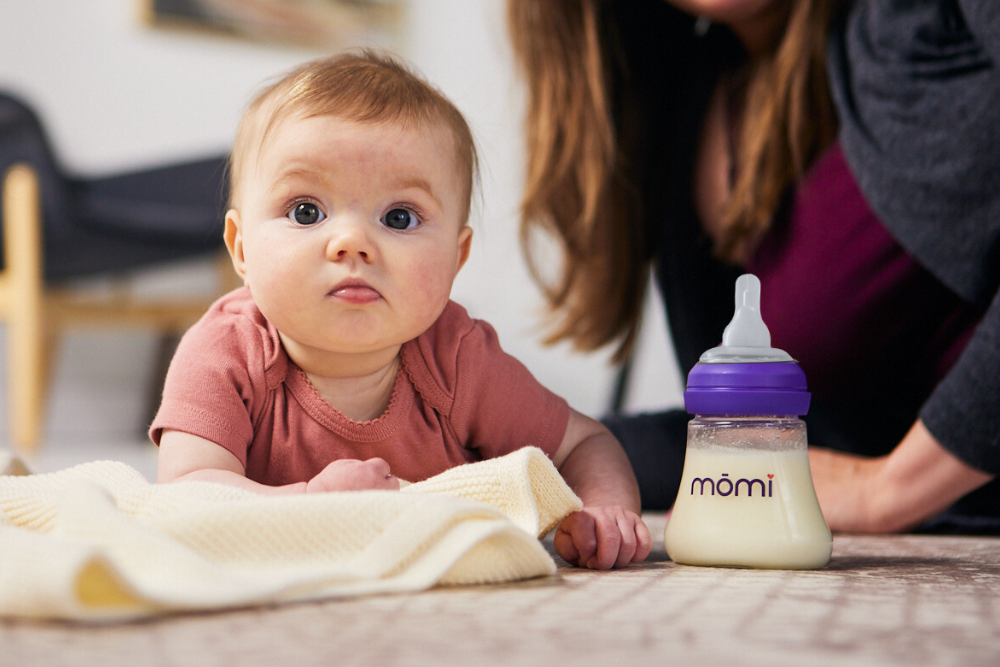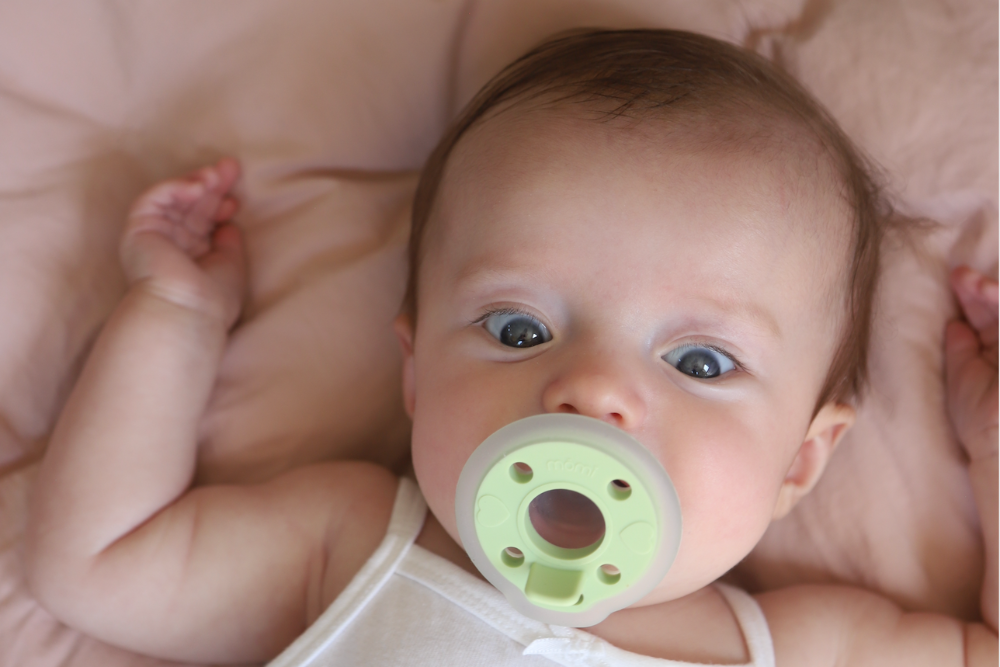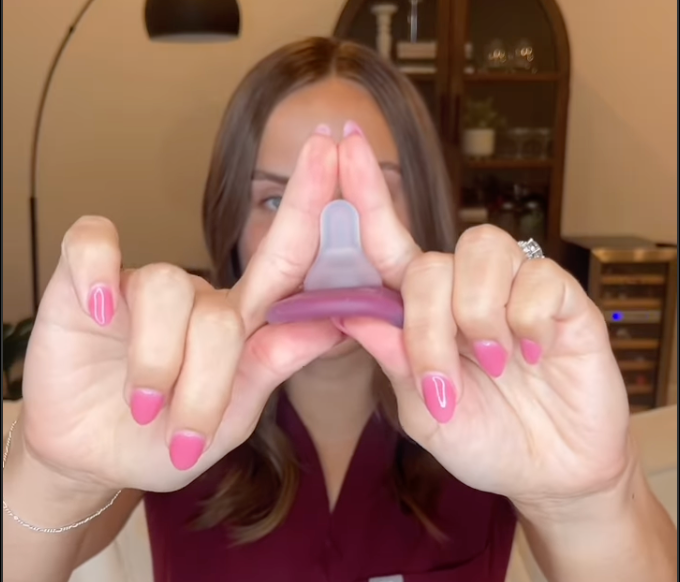Beyond smiles and tears, babies are terrible communicators, especially when it comes to bottle refusal. The stress of bottle refusal largely comes down to frustration over not understanding why your infant is refusing a bottle. If only we could ask! Since your baby won’t be able to communicate why they are refusing a bottle, here are some common causes and helpful tips to overcome the challenge of transitioning between breastfeeding and bottle feeding.
why is my baby refusing a bottle?
These factors could contribute to your breastfed baby refusing a bottle:
- Baby is unable to cope with the different “suck, swallow, breathe” pattern that conventional bottle nipples require.
- The flow of liquid from a conventional bottle nipple is too fast or too slow compared to that of the breast.
- The feel of a bottle nipple is too hard or too cold for a baby to accept a bottle.
- Baby is either too hungry or not hungry enough to learn a new feeding technique.
- Baby is refusing to drink milk from a bottle because he/she would prefer to breastfeed.
- The bottle is being offered in an intrusive manner, or in an uncomfortable position.
- Baby is unhappy with the temperature or contents of the bottle.
Understanding these issues will increase your chances of choosing the best breastfeeding bottle and helping your baby transition with less stress. Once you’ve eliminated these potential hurdles, your chance of bottle acceptance improves.
understanding how the “suck, swallow, breathe” feeding pattern differs between breastfeeding and traditional bottle-feeding, and can lead to bottle refusal
"If your baby is refusing a bottle, it is most often due to difficulty with coordinating how to feed with a traditional bottle nipple," Dr. Meg Alden, a pediatrician from Winston Salem, NC and mōmi’s Chief Medical Officer, said. “The ‘suck, swallow, breathe’ cycle of a traditional bottle is very different from nursing. Babies are dealing with different mechanics, different flow, and a completely different liquid volume than with nursing at the breast."
Breastfeeding requires a baby’s suckling for milk in order to flow into a baby’s mouth. A woman’s breasts do not flow milk continuously. During breastfeeding, your baby knows to suck in a mouthful of milk, stops sucking when he or she swallows the milk, takes a breath, and then sucks again.
Traditional bottle nipples flow milk at a much faster rate than a breast, and most bottles release milk even when babies are not sucking. Because your baby does not have much experience coordinating breathing and swallowing behaviors, he or she is prone to choking when there is too much liquid flowing into his or her mouth.
If your baby has a hard time learning this new feeding rhythm and mechanics with a traditional bottle, he or she is likely to reject the bottle.
what is the best bottle for a breastfed baby with bottle refusal?
It’s been a priority for the pediatric community to find a bottle that best serves breastfed babies for decades. A study published in the Journal of Pediatrics in 1991 found that the speed of milk flow rate, largely determined by the size of the feeding hole of the bottle, greatly impacted preterm babies’ feeding behaviors. For example, slow-flow (or low-flow) and fast-flow (or high-flow) bottle nipples can lead to different infant breathing patterns. Specifically, babies fed with high flow nipples, have lower “minute ventilation,” “breathing frequency,” and “significantly lower sucking pressures.” Therefore, ensuring the appropriate milk flow rate plays a critical role in promoting desirable infant feeding behaviors.
mōmi has consulted IBCLCs, SLPs, OTs, pediatric dentists and other specialists in infant feeding to design a slow-flow bottle-feeding nipple that more closely replicates the breastfeeding experience.
“It’s a big step to adapt to this new flow of liquid from a traditional bottle,” Dr. Meg Alden said. “This is why I am so enthusiastic about mōmi’s revolutionary nipple design! The mōmi nipple allows the baby to utilize the same “suck, swallow, breathe” cycle that they use while breastfeeding, providing so many benefits to both mom and baby and hopefully combating bottle refusal."
A breast-like bottle like mōmi with a slow-flow design feeds your baby at just the right pace and engages your baby in the same “suck, swallow, breathe” pattern involved in breastfeeding, making it one of the best bottles for newborns breastfeeding and for overcoming bottle refusal. Having the right bottle can drastically improve the likelihood of your baby’s bottle acceptance, giving you great peace of mind.
tips for avoiding bottle refusal or overcoming bottle rejection
Beyond finding the right bottle that your breastfed baby is most likely to accept, here are several tactics you can use to further minimize bottle rejection. Also, always keep in mind that your breastfeeding infant needs repeated practice to learn new things! Don’t lose heart if you aren’t successful with the first attempt- it can take many tries for a baby to learn to accept a bottle.
offer a bottle during the right time of day to combat bottle refusal
What is the “right” time to offer a bottle? It’s impossible to name one specific time because each child is different. However, since many babies get more irritable as the day goes on, try offering a bottle earlier in the day. Pick a time when your baby is happy and hungry, but not overly hungry. It’s also not a good idea to try introducing a bottle if your baby is suffering from a cold or other types of sickness because it is hard to introduce new things to many people during stressful times.
Also, take into account your own stress when offering a bottle. Are you going back to work? Heading away for the weekend? Dropping off your baby for a full day at grandma's? Don’t wait until the day before (or even the week before) you need your baby to drink from a bottle. Think and plan ahead so that your baby can adapt to breastfeeding and bottle feeding without pressure. Lower stress on your side translates into lower stress on your baby’s side.
a pediatrician recommends someone other than mom offers the bottle
“When attempting to introduce a bottle, I recommend having someone other than the nursing mom “tap in” to do the feed - it’s a great time for dad to get involved! This is because babies know when they are close to their moms and their milk source,” Dr. Meg Alden said. “Oftentimes the breast is their first preference! Having someone else, whether it be a friend, a co-parent, or a family member step in, will oftentimes help ease that transition with a bottle.”
change liquid contents gradually for less bottle rejection
If your breastfed baby is taking a bottle for the first time, use freshly pumped milk that hasn’t been refrigerated. If that goes well, move onto warmed-up refrigerated milk. Finally, introduce thawed milk from the freezer. Babies may taste the difference among fresh, refrigerated, and frozen milk, which may cause them to reject the bottle.
If you plan to transition to formula in bottles and have previously been breastfeeding or feeding your baby breast milk, you should gradually increase the amount of formula to breast milk ratio in the bottle. If you’re mixing breastmilk and formula, start with a 25% formula, then 50%, then 100% formula for however many ounces your baby is drinking.
mimic the breastfeeding experience when bottle feeding
Babies are creatures of habit. You should mimic the breastfeeding experience as much as possible when first introducing a bottle. It’s a good idea to warm up a bottle nipple under running water so that it feels closer to body temperature and less foreign when your baby is first learning. Just like a breastfed baby would root for a mother’s nipple, you can tickle your baby’s bottom lip with a bottle nipple to encourage a strong latch. Offer a bottle on one side and then switch arms halfway through as you would at the breast. Give rest breaks between swallows and allow your baby to pace him- or herself slowly.
All of these strategies are to minimize the differences between breast and bottle so that your baby is less likely to refuse a bottle and can adapt better to bottle feeding. If your breastfed baby continues with bottle rejection, keep these main principles in mind:
- Find a bottle nipple that offers slow-flow feeding.
- Try having other people besides mom handle the bottle feeding.
- Maintain as many similarities between breastfeeding and bottle-feeding as possible.
- Introduce the bottle gradually and expect it to take a few tries.
Before you know it, your baby will adapt to a bottle, and the frustration you may feel will be a distant memory!




